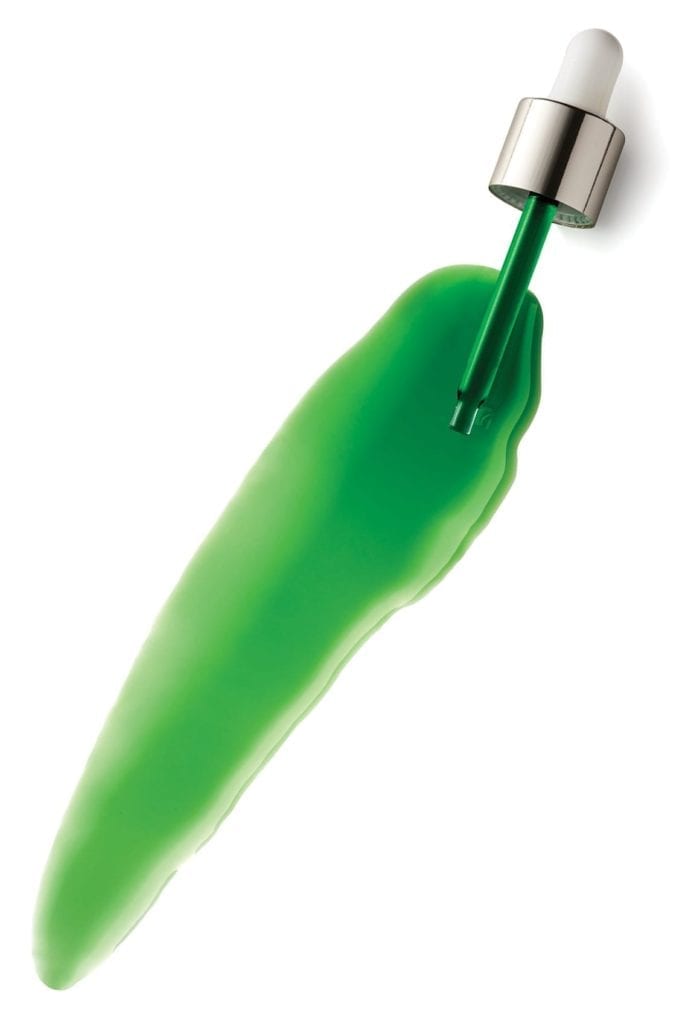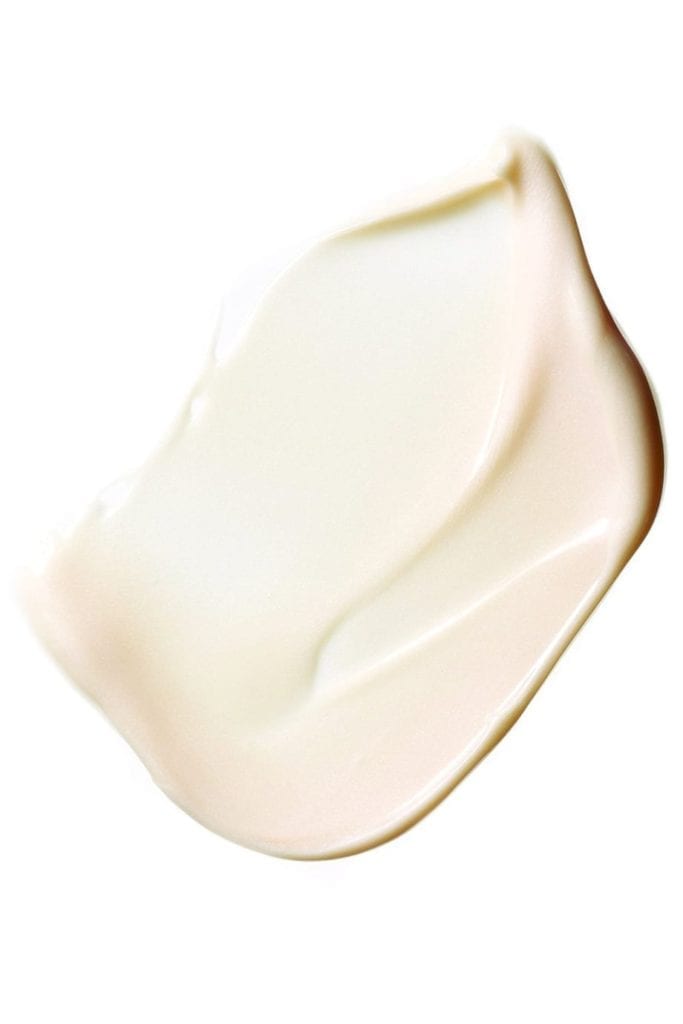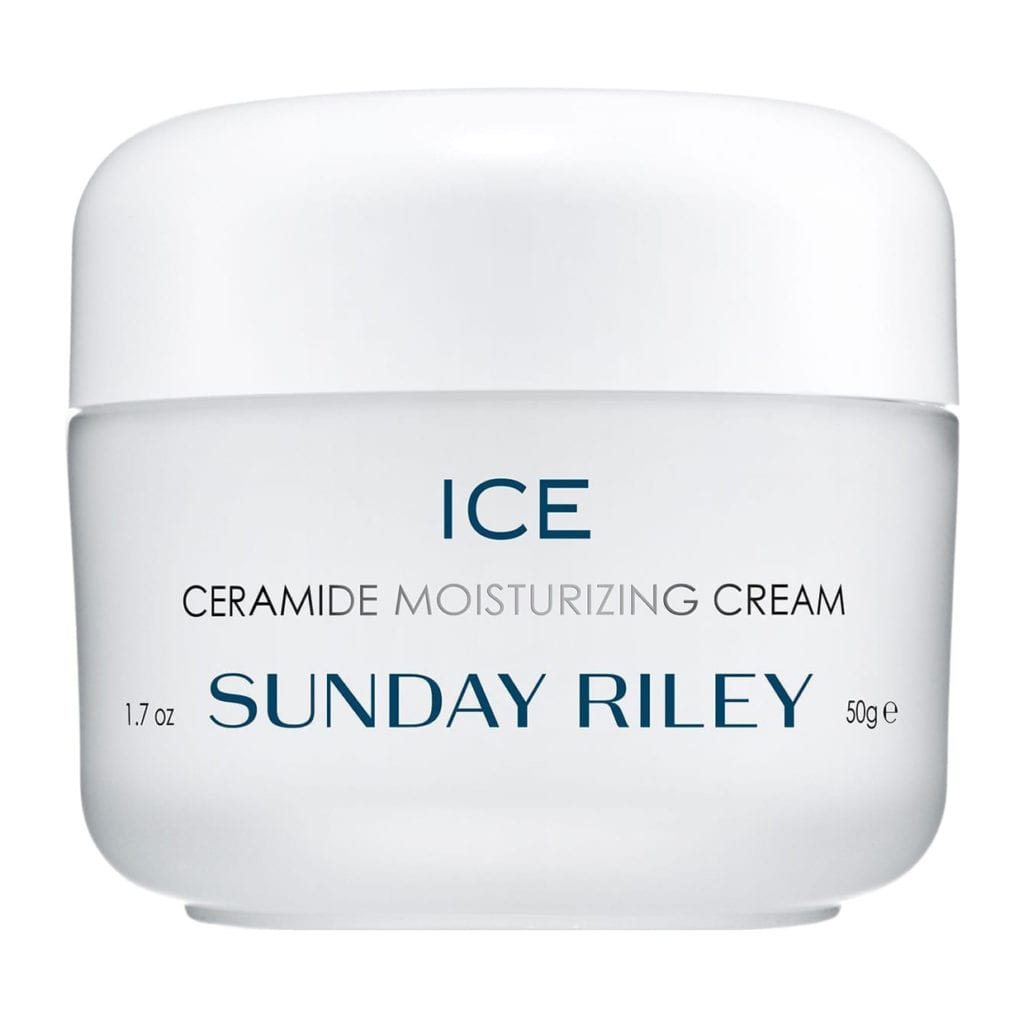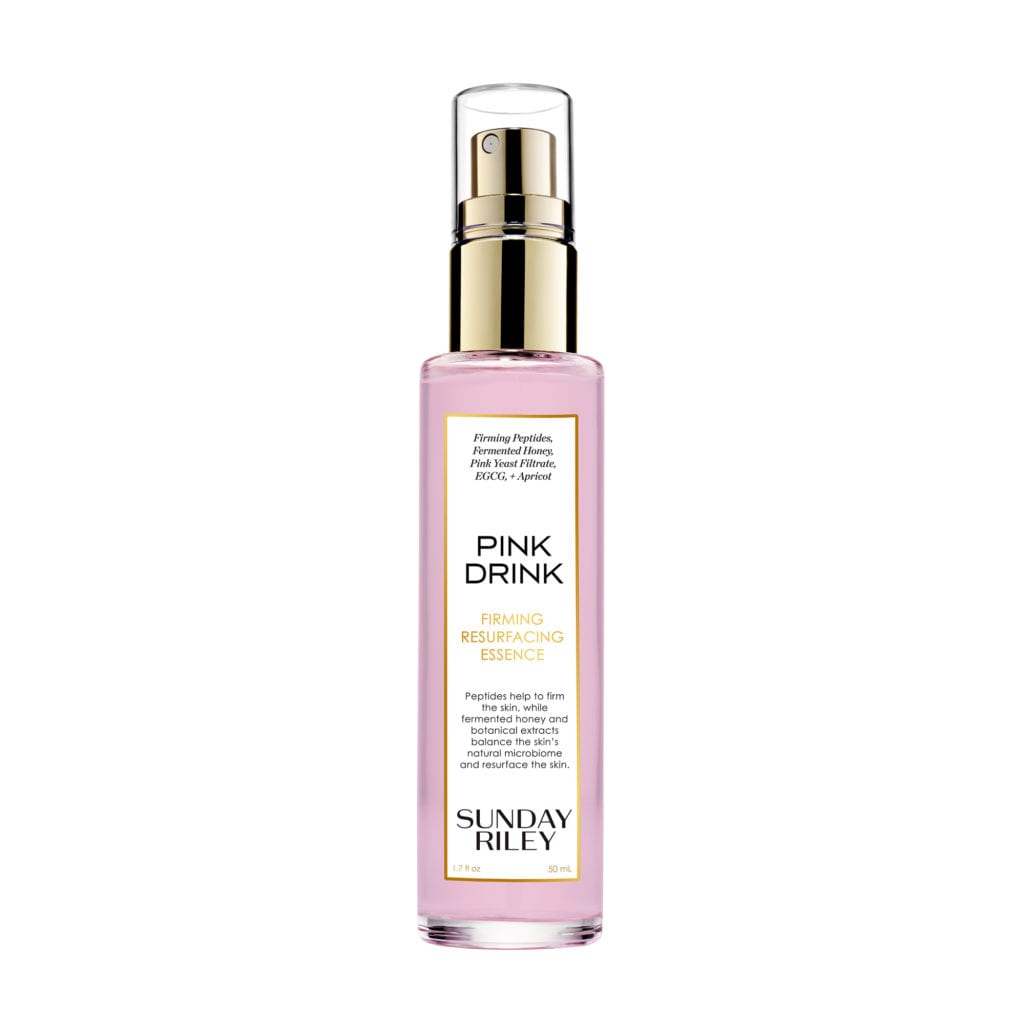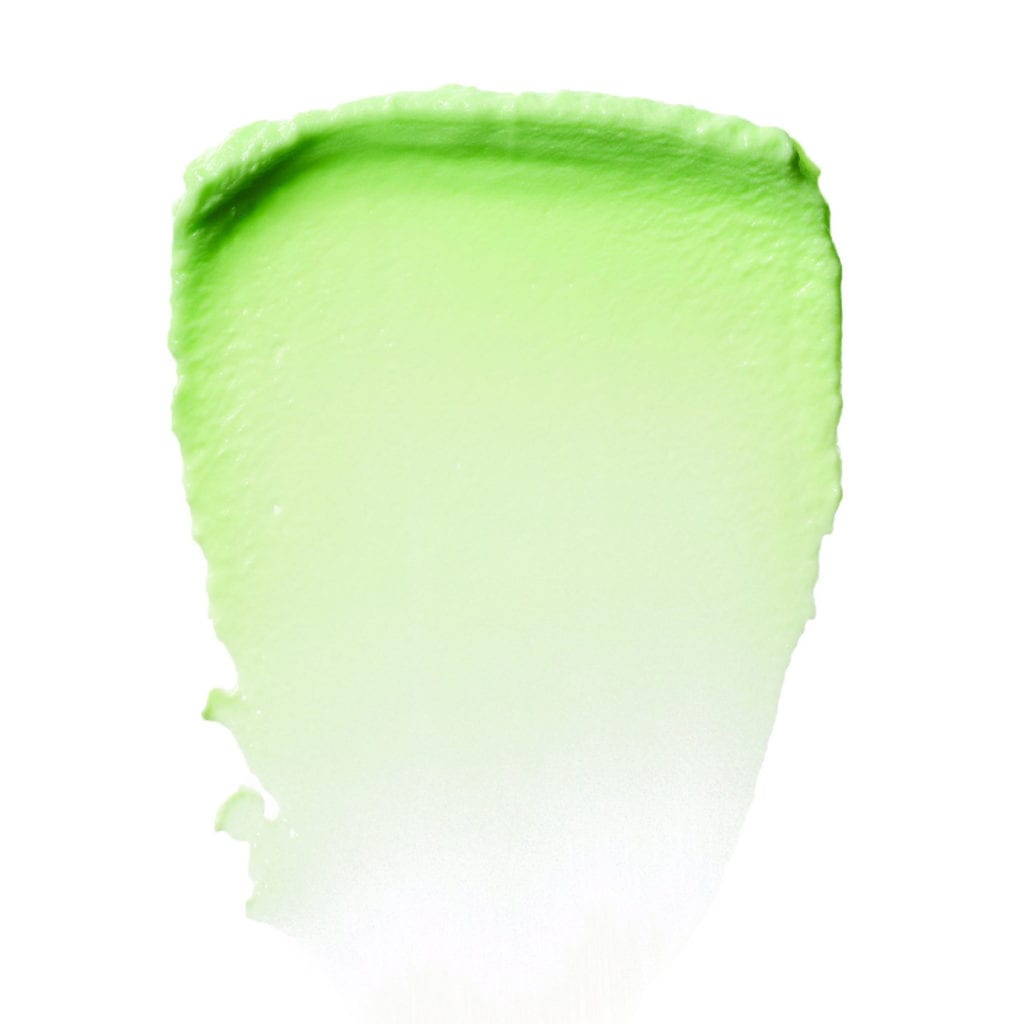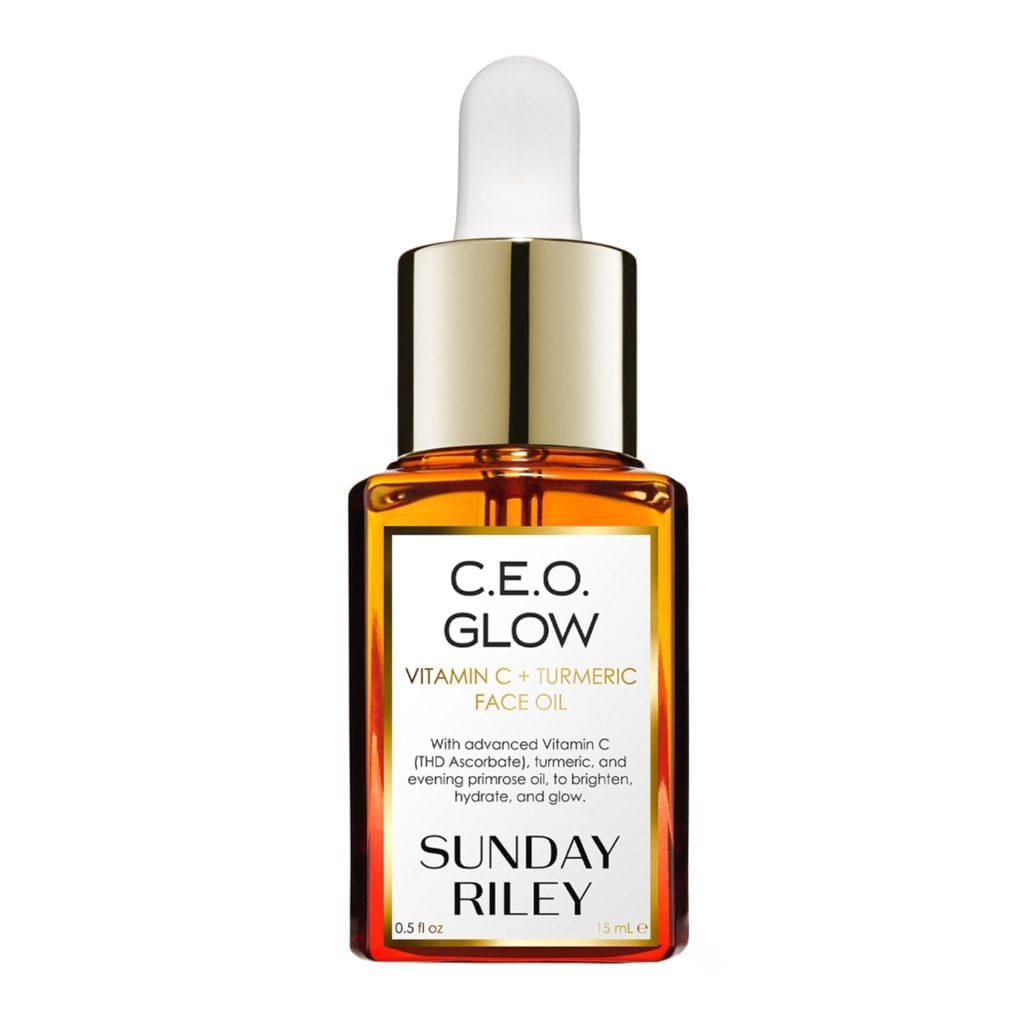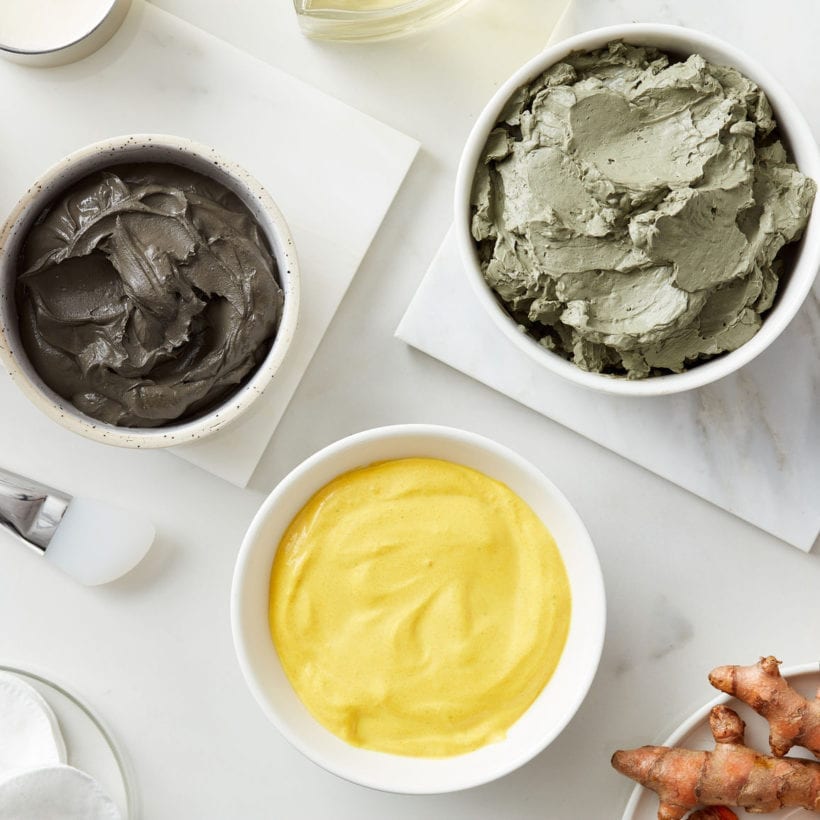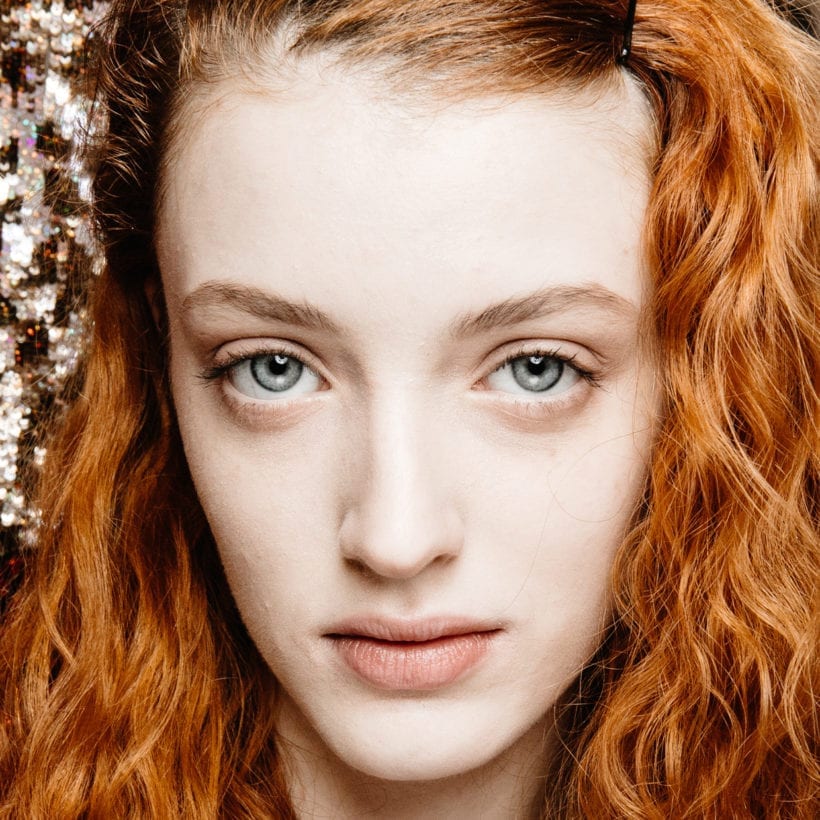Overwhelmed with ingredient lists? No need to stay in the dark — bookmark this page to help you navigate everything in the beauty realm. This skincare ingredient glossary is backed by dermatologists, cosmetic chemists, and more, so you can rest easy knowing exactly what’s in your products and how they perform on your skin.
AHA
What is it? Alpha Hydroxy Acid (AHA) is a group of naturally derived and synthetic acids that gently exfoliate the top layers of the skin revealing a brighter, more even complexion.
Who should use it? AHA can be used by anyone looking to reduce the appearance of fine lines while smoothing and evening skin. It also brightens the appearance of dull-looking skin.
How should it be used? Use products containing AHA after cleansing and toning and before moisturizing. When you first start with AHA use it every other day, then gradually increase usage to once daily. Check-in with your derm when using AHA and retinol together.
Our recommended products: Good Genes Glycolic Acid Treatment, Clean Rinse Clarifying Scalp Serum.
Learn more about the difference between glycolic acid and lactic acid, two of the most popular AHAs.
Apple Cider Vinegar
What is it? Apple cider vinegar is a type of vinegar sometimes found in hair care or DIY hair rinses. It can improve hair’s shine and help prevent dandruff by neutralizing the scalp’s pH. Too much however may dry out the hair and scalp. When eaten, ACV may help lower blood sugar, though research is limited.
Who should use it? People who often get dandruff or dry skin on their scalp may benefit from apple cider vinegar. If your scalp feels dry after using it, follow with an oil, or use ACV less frequently.
How should it be used? When using a product with apple cider vinegar for your hair, use it once a week as directed, or whenever you feel build-up or dryness on your scalp. Rinse thoroughly. Be careful when using ACV on your skin as it’s highly acidic.
Learn more about what apple cider vinegar can (and can’t) do here.
BHA
What is it? Beta-hydroxy acid, (BHA) is oil-soluble so it can penetrate a little deeper into the skin and help improve the appearance of blemishes and enlarged pores by removing excess sebum.
Who should use it? BHA works well for people with acne-prone or oily skin. It works to clear out our pores and rid them of excess sebum, dirt and pollution, which if left in the pore can lead to inflammation and breakouts.
How should it be used? If you have oily or acne-prone skin, use BHA once daily after cleansing and toning and before moisturizing. If you have normal or dry skin, you may use it every few days.
Our recommended products: U.F.O Ultra-Clarifying Acne Treatment Face Oil, Charcoal Smoothie Jelly Body Scrub, Clean Rinse Clarifying Scalp Serum.
Learn more about how to incorporate BHAs as one of the 3 active ingredients every skincare routine needs.
Blue Tansy
What is it? Blue Tansy is a flowering plant from Northern Africa that’s sometimes also called “Moroccan Chamomile.” It’s naturally vibrant blue color and it has anti-inflammatory properties that work to calm skin, reduce redness, and relieve heat which makes it a key ingredient post-sunburn. It also may help repair damaged or aging skin, and it has detoxifying properties that can help skin repair itself.
Who should use it? Really anyone can benefit from incorporating Blue Tansy into their skincare routine. It works especially well when paired with stronger ingredients like retinoids or acids, as it can calm irritation and reduce surface redness. It’s also a must-use after too much time in the sun because it both reduces the pain and inflammation associated with sunburns, and helps reduce some of the damaging effects of UV rays, though if the product also contains retinol in addition to blue tansy, skip it after a burn.
How should it be used? Look for an oil or cleansing balm that contains Blue Tansy and use it daily. As with all essential oils, make sure to spot test the product on a small, inconspicuous area of skin like the wrist then wait an hour to make sure there is no reaction.
Our recommended products: Luna Sleeping Night Oil, Blue Moon Clean Rinse Cleansing Balm.
Learn more about the health and skin benefits of Blue Tansy.
Caffeine
What is it? In addition to getting the morning started, caffeine is an anti-inflammatory ingredient that can reduce the appearance of puffiness and inflammation by restricting the blood vessels. It can reduce the appearance of under-eye bags, wrinkles, and cellulite.
Who should use it? Caffeine is a great ingredient to incorporate for those who aren’t getting a good night’s sleep, or who want to brighten and smooth skin.
How should it be used? Look for an eye cream or body scrub that contains caffeine and use it once or twice daily.
Our recommended products: Auto Correct Eye Cream.
Learn more about the best sources of caffeine and the recommended amount to consume.
CBD

What is it? Cannabidiol (CBD) is the non-mind-altering compound found in marijuana. In skincare, CBD may help with anything from clearing acne to reducing the appearance of wrinkles and easing redness and eczema.
Who should use it? CBD is a gentle, skin-normalizing ingredient that works well for those with acne-prone or sensitive skin.
How should it be used? Look for cleansers, moisturizers, and oils that contain CBD.
Learn more about some of the best CBD products and explore CBD brands owned by Black women.
Ceramides
What is it? Ceramides are lipids that help lock moisture into the skin for deep hydration while protecting against pollution and environmental damage.
Who should use it? Ceramides work well for hydrating skin that is dry, dehydrated, dull, or showing signs of aging.
How should it be used? Look for a moisturizer that contains ceramides to lock in hydration after a shower or bath. They can be used twice a day, or throughout the day if you need a little more.
Our recommended products: ICE Ceramide Moisturizing Cream, Pink Drink Firming Resurfacing Essence.
Learn more about how ceramides help build a strong skin barrier.
Charcoal
What is it? Charcoal is a natural material that helps draw impurities out of the skin to unclog pores, clarify the skin, reduce acne, even the complexion, and slough off dead skin cells.
Who should use it? Charcoal is a key ingredient for anyone looking to deeply cleanse and purify the skin.
How should it be used? Look for masks and scrubs containing charcoal and use them daily or whenever you have a breakout or keratosis pilaris.
Our recommended products: Charcoal Smoothie Jelly Body Scrub.
Learn more about how charcoal can be used for an armpit detox and why doctors don’t recommend eating charcoal.
CoQ10
What is it? CoQ10 provides antioxidant support and helps the body produce collagen and elastin, resulting in firmer, smoother skin. It can help improve the appearance of dry or damaged skin.
Who should use it? Anyone who is hoping for firmer, more even skin can benefit from adding CoQ10 to their skincare routine. It’s naturally found in the body, but using it in skin care can help reduce damage from free radicals, and brighten and even skin.
How should it be used? Look for CoQ10 in the body or face moisturizers and oils, and use them daily for the best results.
Our recommended products: Fairy Godmother Shimmering Body Oil Gel, A+ High-Dose Retinoid Serum.
Glutathione
What is it? Glutathione (sometimes called GSH) is an antioxidant found in many plants, fungi, and bacteria and it’s also a molecule naturally made by the liver. In skin care it can be used as a brightening agent to reduce the appearance of dark spots, hyperpigmentation, or melasma.
Who should use it? Glutathione can be helpful for people experiencing hyperpigmentation, melasma, dark spots, or scarring.
How should it be used? Talk to your derm about incorporating a product containing glutathione if you’re experiencing hyperpigmentation or stubborn dark spots. Some doctors may recommend intravenous or oral use in addition to topical.
Learn more about this powerful antioxidant here.
Glycolic Acid

What is it? Glycolic acid is an AHA that’s derived from sugar cane. It has a low molecular weight to easily penetrate the skin and it works to make skin look brighter and more even. It exfoliates the surface of the skin by dissolving the glue that binds the dead skin cells to the surface.
Who should use it? Anyone who is noticing the signs of aging on their skin or who is experiencing hyperpigmentation or melasma can benefit from adding glycolic acid to their skincare routine.
How should it be used? Use glycolic on your face or scalp after cleansing.
Our recommended products: Good Genes Glycolic Acid Treatment, Clean Rinse Clarifying Scalp Serum.
Learn more about why glycolic acid is your skincare exfoliant holy grail.
Honey
What is it? You probably already know that honey is a sticky, sweet substance made by bees, but it also has benefits for the skin. Honey is a humectant, meaning it has the ability to pull moisture into the skin from the air. This makes it great for dry skin that needs quick, lasting hydration. In addition, the antioxidants found in honey can not only protect the skin from environmental aggressors but also help reverse some premature signs of aging like fine lines, wrinkles and dullness.
Who should use it? All skin types can benefit from honey in the form of a toner, serum, or moisturizer that includes honey.
How should it be used? Honey is a gentle ingredient that can be used twice daily, morning and night. If the product also contains acids or retinol, be sure to start by using it a few times a week, then build up slowly.
Our recommended products: Pink Drink Firming Resurfacing Essence, A+ High-Dose Retinoid Serum.
Learn more about how honey and other bee products can improve your skin.
Hyaluronic Acid
What is it? Hyaluronic acid is actually a sugar that’s naturally made by the body. The ingredient is also added to skincare as it has the ability to hold onto 1000 times its weight in water to keep skin hydrated, plump, and bright.
Who should use it? Everyone, especially those who have dry skin or live in a very dry climate, should use products containing hyaluronic acid as it helps the skin hold onto moisture. People who live in a very humid climate will also benefit from hyaluronic acid as it helps pull moisture in from the air.
How should it be used? Use a moisturizer, oil, or serum twice daily on damp skin or whenever skin starts to feel tight or dry.
Our recommended products: Sunday Riley C.E.O. Afterglow Brightening Vitamin C Gel Cream
Learn more about how hyaluronic helps heal rough, dry skin and how hyaluronic acid stimulates collagen.
Lactic Acid
What is it? Lactic acid is an AHA derived from milk (though in skincare it’s commonly synthetically reproduced and therefore vegan). It’s slightly more hydrating than glycolic acid.
Who should use it? Anyone with dark spots, blemishes, or uneven skin can benefit from using lactic acid.
How should it be used? Use lactic acid two to three times a week on clean dry skin and follow with moisturizer.
Our recommended products: Good Genes Lactic Acid Treatment (can be used daily).
Learn more about how lactic acid can be incorporated into your scalp care routine and why lactic acid should replace salicylic acid while breastfeeding.
Lemongrass
What is it? Lemongrass has some purifying properties that can naturally detoxify and tone the skin while neutralizing the damaging effects of free radicals.
Who should use it? Lemongrass can help to reduce the appearance of the pores and calm acne and it works well for those with oily or acne-prone skin.
How should it be used? Use lemongrass products once a day on dry skin after cleansing. Generally, it can be used as much as you want as it’s hard to overdo it.
Our recommended products: Good Genes Glycolic Acid Treatment, Good Genes Lactic Acid Treatment.
Learn more about how lemongrass can also be used as a sugar replacement by checking out our margarita cocktail recipe.
Licorice Root

What is it? The root of the licorice plant is a powerful antioxidant that can help skin glow, reduce dark spots and discoloration, and reduce the production of oil.
Who should use it? Licorice root is beneficial for anyone experiencing hyperpigmentation, hoping to fade acne scars, or generally brighten the skin.
How should it be used? Licorice root is incorporated into moisturizers, oils and other treatments and can be used daily.
Our recommended products: U.F.O Ultra-Clarifying Acne Treatment Face Oil, Good Genes Lactic Acid Treatment.
Learn more about how licorice root can be used to handle redness, rosacea, and stress.
Mandelic Acid
What is it? Mandelic acid is an AHA that’s derived from bitter almonds and works gently on the skin to treat inflammatory acne and hyperpigmentation. Mandelic acid works to improve skin texture and cell turnover through exfoliation and the promotion of collagen production. It also lightens dark spots, regulates sebum production, and unclogs pores, in turn helping to fight and prevent acne.
Who should use it? Mandelic acid is great for people facing various skincare issues such as acne, poor skin texture, hyperpigmentation, wrinkles and fine lines, and melasma. The effects of chemical exfoliation with mandelic acid are cumulative, so over time as you use it you can expect results to improve.
How should it be used? Look for mandelic acid in common skincare products such as over-the-counter chemical peels, cleansers, washes, toners, and serums. You can use mandelic acid as part of your daily skincare routine in the case of cleansers, serums, and toners. As chemical peels can be more irritating to the skin due to their potency of ingredients, avoid using them more than two to three times each week or as directed on the product label.
Learn more about skincare acids and questions you may have.
Marula Oil
What is it? Marula oil comes from the nuts and kernels of the marula fruit tree, native to southern Africa where the plant has been used historically in traditional medicines. For skincare, marula oil is rich in antioxidants and helps moisturize and soften skin. Marula oil also works well to reduce inflammation and has some antibacterial properties, which is good for people prone to breakouts.
Who should use it? Marula oil is safe and effective for all skin types, though it is especially beneficial for people with dry, acne-prone, and cracked skin. It’s packed with essential fatty acids, amino acids, and antioxidants and is widely used in skincare to introduce and lock in moisture while improving skin elasticity.
How should it be used? You can use marula oil daily, as you would other face oils, during the last steps in your skincare routine after cleansing and using any moisturizing creams. It’s important to avoid overuse as it can clog pores and contribute to causes of acne. You can also find marula oil in a number of over-the-counter skin and hair products, such as a serum or shampoo.
Learn more about using face oils during the summer.
Marshmallow Root
What is it? Marshmallow root is an ingredient derived from the marshmallow plant (though most marshmallows that you’d use in a s’more are not from this plant). The plant contains a thick, jelly-like substance called mucilage, plus antioxidants, and ceramides. It works to hydrate and protect dry or damaged skin and hair, and it may also help with wound healing.
Who should use it? Anyone with dry, acne-prone or itchy skin can benefit from adding a product with marshmallow root into their skincare routine.
How should it be used? Use a toner, moisturizer, balm, or hair mask to treat dry skin and hair and calm signs of surface redness. Typically these products are gentle enough to be used daily.
Our recommended products: Martian Mattifying Melting Water-Gel Toner.
Learn more about how marshmallow root can help your skin.
Matcha

What is it? Matcha is in the green tea family but instead of being dried, like tea leaves, it’s typically a bright green powder. It can be consumed like tea, but it’s also popular in skincare thanks to its antioxidant-rich properties. It’s also anti-inflammatory which can be helpful for acne and certain scalp conditions.
Who should use it? Anyone who could use a little boost in the morning but finds the coffee leaves them jittery should consider sipping matcha tea or a matcha latte. As for skincare, if your skin is dry, itchy, or inflamed, you may find products that contain matcha are soothing.
How should it be used? Look for an eye cream, body scrub, or moisturizer that contains matcha and use it once daily or when skin feels especially dry.
Learn more about if your beauty routine is missing matcha here.
Niacinamide
What is it? Niacinamide is also known as vitamin B3 and it helps to tighten pores, reduce acne and inflammation, and protect skin against environmental stressors like sunlight and pollution.
Who should use it? Niacinamide should be used by anyone who spends a lot of time outside or experiences regular breakouts. Or those who have aggravated/irritated skin or surface redness.
How should it be used? Niacinamide can be used on the face or body daily.
Our recommended products: Clean Rinse Clarifying Scalp Serum, Saturn Sulfur Spot Treatment Mask.
Learn more about how niacinamides can be used to cure skin fatigue.
Peptides
What is it? Peptides are amino acids that help build collagen and elastin for firmer, brighter, and more youthful-looking skin.
Who should use it? Peptides should be used by anyone noticing their skin losing firmness, elasticity or looking crepey.
How should it be used? For max efficacy, look for peptides in products that can be left on the skin (like moisturizers, serums, and essences) and use them twice daily or as much as you need.
Our recommended products: Pink Drink Firming Resurfacing Essence.
Learn more about how peptides can make skin look younger and boost hair growth and how collagen peptides work.
Prebiotic
What is it? Prebiotics feed the skin healthy bacteria (prebiotics are the food for the bacteria rather than being the good bacteria) to balance the skin’s microbiome. They can help minimize the appearance of redness, dryness, and help strengthen the skin barrier.
Who should use it? A prebiotic in skin care is beneficial for those with rosacea or other skin conditions, and anyone who wants healthy, balanced skin that glows.
How should it be used? After cleansing as the first step in the treatment phase of your regime and before applying any other products, apply prebiotics to dry skin.
Our recommended products: Pink Drink Firming Resurfacing Essence.
Learn more about why prebiotics and probiotics are the perfect pair.
Probiotics
What is it? Probiotics are microorganisms that help balance skin, reduce inflammation, and help prevent premature aging caused by environmental stressors. They are responsible for keeping the microbiome in check and healthy.
Who should use it? Probiotic skincare can be helpful for those experiencing rosacea, acne, inflammation, or who live in a polluted or very sunny environment.
How should it be used? Look for moisturizers or face oils that contain probiotics and use them once daily in the morning. Prebiotics are vital in keeping probiotics healthy.
Our recommended products: Pink Drink Firming Resurfacing Essence (it contains prebiotics).
Learn more about some surprising sources of probiotics and why probiotics can be your skin’s savior.
Retinol
What is it? Retinol is an over-the-counter version of a retinoid that boosts cell turnover, removes dead skin, brightens the appearance of dark spots discolorations and flattens the top layer of cells for skin that looks glowy, youthful, and even.
Who should use it? Retinol is a powerful ingredient for anyone looking to reduce the appearance of fine lines and wrinkles or who wants to clear blemishes and uneven texture on the skin.
How should it be used? Use products containing retinol a few times a week after cleansing and before moisturizing. Check-in with your dermatologist when considering using retinol at the same time as products containing AHA or BHA.
Our recommended products: Luna Sleeping Night Oil, A+ High-Dose Retinoid Serum.
Learn more about what type of retinol is the best for your skin and how retinol reacts to sun exposure.
Salicylic Acid
What is it? Salicylic acid is a BHA that is able to get deep into the skin to clarify pores and reduce redness and inflammation.
Who should use it? Salicylic acid works well for people wanting to clear up blackheads and whiteheads. For those with clear skin, salicylic acid can help prevent future breakouts from happening. It removes the excess sebum and really de-clogs the pores/follicle by removing dirt/pollution and product build-up.
How should it be used? Salicylic acid can be used morning and night.
Our recommended products: U.F.O Ultra-Clarifying Acne Treatment Face Oil, Charcoal Smoothie Jelly Body Scrub, Clean Rinse Clarifying Scalp Serum.
Learn more about how salicylic acid can work to treat scalp acne, vaginal acne, and acne scars.
Sulfur
What is it? Sulfur is a chemical element that’s often found in anti-acne skincare. It helps to draw excess oil out of the skin, thereby reducing the appearance of pimples, oil, and surface redness. It can also help to unclog pores by drying out dead skin cells.
Who should use it? Anyone with oily or acne-prone skin can benefit from using a mask or a spot treatment with sulfur in it.
How should it be used? Apply a mask or spot treatment containing sulfur directly to blemishes, blackheads, or oily areas of the face. Allow the mask to thoroughly dry before gently removing it with warm water.
Our recommended products: Saturn Sulfur Spot Treatment.
Learn more about how sulfur can help with inflammation and sulfur can treat blemishes.
Turmeric

What is it? Turmeric is an orangey-yellow spice that contains antioxidant and anti-inflammatory properties. It helps skin look vibrant, firm, and bright.
Who should use it? Turmeric works well for anyone who wants to add some glow back to skin that’s looking dull, tired, or puffy.
How should it be used? Use turmeric once daily either in the morning or night.
Our recommended products: C.E.O. Glow Vitamin & Turmeric Face Oil, Light Hearted Broad Spectrum SPF30 Sunscreen.
Learn more about how to get glowing skin by drinking turmeric and other ingredients.
Vitamin C
What is it? Vitamin C, sometimes known as ascorbic acid, protects the skin from the effects of free radicals in the environment, like UV rays and pollution. There are different types of Vitamin C in skincare. L-ascorbic acid is the biologically active form, but also the most unstable, which can lead to shorter shelf life and increased skin sensitivity. This form is also water-soluble and does not penetrate past the upper levels of the epidermis. THD Ascorbate is much more potent than standard ascorbic acid; it’s also more stable (meaning it won’t oxidize) and mixes with oil because it is fat-soluble. It can help the skin look brighter and more even, and may diminish the look of dark spots. It also helps to diminish the appearance of fine lines, increase collagen production for plumper-looking skin and helps the skin fight the aging effects of free radicals.
Who should use it? Vitamin C should be used by anyone who is looking to brighten their skin, especially those who spend a lot of time outside in cities or areas with strong sun.
How should it be used? Vitamin C is safe to use twice daily. Morning use helps shield skin from free radicals, like pollution or UV rays, and evening use will help repair any damage the skin has endured during the day.
Our recommended products: Vitamin C Rich Hydration Cream, CEO 15% Vitamin C Brightening Serum, C.E.O. Glow is a Vitamin C + Turmeric Face Oil.
Learn more about commonly asked questions about vitamin C and how to add vitamin C to your routine.
We only recommend products we have independently researched, tested, and loved. If you purchase a product found through our links, Sunday Edit may earn an affiliate commission.

